When creating an online store or marketplace, you must think through the entire system of business processes. At the development stage, you need to decide which services your resource is going to work with and consider various third-party integration options. How and what will you use to optimize or simplify the operation of your web platform?
The task isn’t easy and requires detailed discussion.
Why do you need to integrate third-party software?
E-commerce projects aren’t the only ones belonging to the types of applications & sites that require integration with third-party software, but they’re obviously the first on the list. Why is it so? The reason appears on the surface.
Any owner of an online store wants his buyers to be fully satisfied and would be happy to see them among his loyal customers. After all, the profit and success of the whole business depend on it. So, the e-commerce resource must meet the needs of the client and be as user-friendly as possible.
There are many factors influencing the user experience: payment security, convenient selection of delivery services, and others. In addition, the site should be clear to the staff of the online store either. Otherwise, the manager may make a mistake when working with the resource, which would lead to financial losses.
That's why you have to integrate your marketplace with third-party software. These eCommerce integrations are needed to keep the online platform running at a high level.
Not sure where to start? Don’t worry! We're going to provide you with a list of integrations to add to the b2b marketplace website or any other e-commerce resource.
Payment gateway
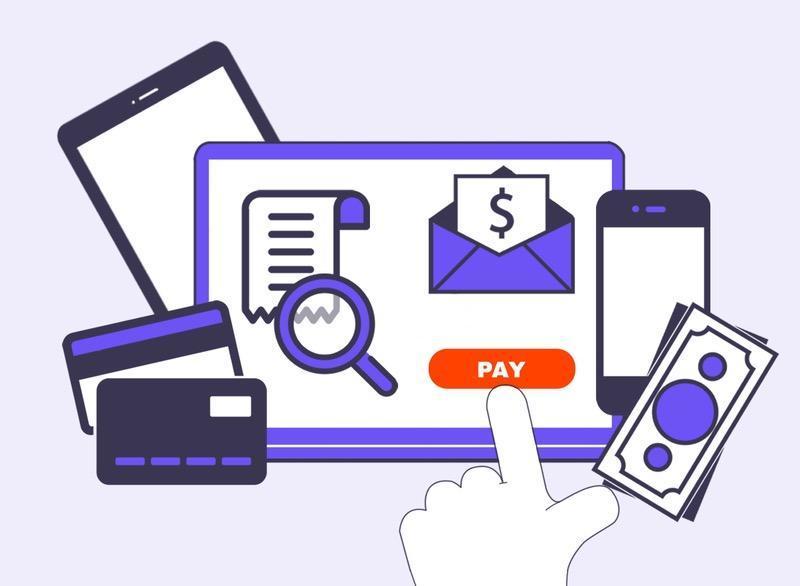
The goal of an e-commerce site is to be your source of money. It means the buyer must be able to pay, and do it quickly and safely. Consequently, the web store should have a reliable payment gateway. And to connect it, you have to integrate third-party software.
When organizing a payment system, draw attention to the following factors:
-
the service security (when it comes to money, the security problem becomes a key one);
-
commission amount (there is no sense to pay more than necessary);
-
the comfort of the payment process (don’t force the consumer to make extra clicks);
-
the ease of connecting the system (it's desirable that the process of integrating software and systems intended to set up a payment gateway be as simple as possible);
Payment gateway operation scheme:
-
After placing an order in the web store, the purchaser gets an invoice to make a payment.
-
Order details are being transferred to the chosen payment service, and the buyer is being redirected to this system (or, rather, to its web resource). Here the customer can select how he prefers to pay (say, using electronic money, bank cards, and so on). And, of course, he must enter all requested information.
-
Then the entered data should be verified. If everything seems to be okay, the transaction is being conducted. This is where the security factor is really crucial (that’s why you have to choose popular eCommerce configurations which have already proven their reliability).
-
In the case of a successful or unsuccessful transaction, the payment system returns the buyer to the website of the online store and informs its server about the results of the transaction.
The payment gateway should offer:
-
Flexible commission approach;
-
Stability in making and accepting a payment;
-
24/7 user support;
-
Integrated payments upsell/cross-sell tools;
-
Intuitive and easy-to-use UI/UX;
-
The ability to conduct all popular payment options.
Paypal
Among the popular integrations aimed at safe and reliable payments, the most well-known is obviously PayPal.
The system in question has many great advantages, the most important of which is the highest level of security. PayPal takes care of the issue on its own: the payment is being made on a well-protected and verified website of the PayPal service, so the online store where the buyer makes a purchase has nothing to do with it. And this is important when it comes to money.
Besides, PayPal memorizes user behavior in detail and adapts to it, offering an intuitive way to meet a bill, as well as personalized and unique e-commerce options which are convenient to a particular buyer.
Braintree
The list of popular eCommerce configurations focused on online and mobile payment gateways also contains Braintree. And no wonder, because PayPal and Braintree have a certain connection: PayPal purchased the Braintree service a few years ago (in 2013) and paid about $ 800 billion.
The service is designed for e-payments through bank cards and remains in demand among such platforms as Airbnb, Fab, LivingSocial, Uber, and Twilio. Braintree can be a logical part of your retail management system since it allows not only recurring (namely, periodic) payments but also one-time ones (which may come in handy too). In addition, it offers:
-
simplification of main processes (information processing, ensuring regular payments, and so on);
-
data protection (all the information is being stored in an encrypted format);
-
convenient app version (SDK allows marketplace owners to create their own payment buttons and iOS and Android applications);
-
internationalism (service is available in a lot of countries including the USA, Europe, Australia, and New Zealand).
Shipping gateway
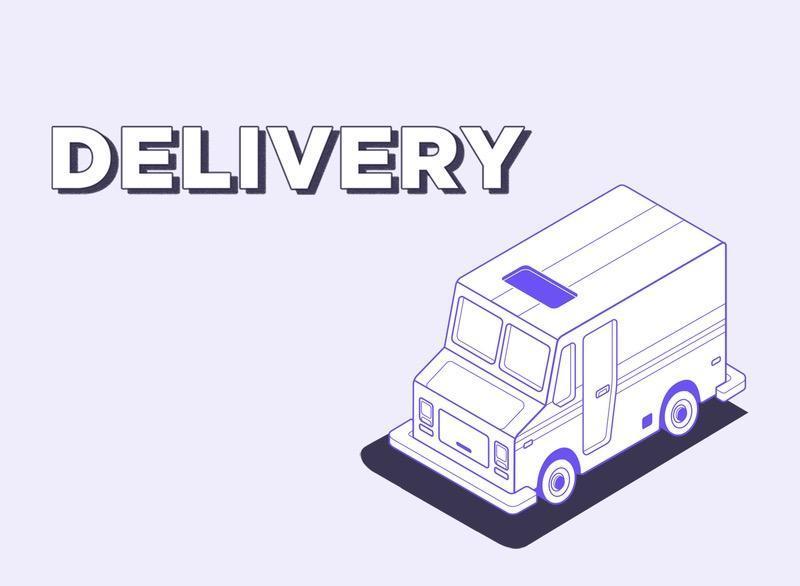
Discussing the third-party integration options, we shouldn't forget about the shipping gateway. Indeed, one of the key factors influencing the customers’ decisions is delivery. There are so many questions to ask: will the delivery service be free or not? When and how (in what way) will the package be delivered? And so on!
From the buyer's side, everything looks quite simple: a user chooses a shipping service, makes a few clicks, and waits for information about the order intake (or maybe the courier brings his order directly to his home?). However, if willing to implement the described scheme in practice, you should cooperate with the carrier companies and integrate third-party software.
Features the shipping gateway must have:
-
Easy order and invoice creation process
-
A convenient order processing system
-
The ability to track the parcel
-
An accurate rating system
-
Timeliness and speed of delivery
Shippo
Shippo is one of the well-known third-party integrations for e-commerce platforms, which need a tool allowing them to implement a reliable delivery system. And by the way, it cooperates with the most popular and famous carrier companies.
Shippo provides owners of online stores (and other similar resources) with API helping to connect reliable shipping services. If done correctly, the delivery process will be simple and clear for both the buyer and the seller.
Shippo also guarantees:
-
intuitive and user-friendly interface;
-
different programming languages (integrating software and systems of the sort, you can take advantage of the library you need);
-
multilingual service;
-
customer support around the world;
-
the ability to work with all types of platforms (both web and mobile).
FedEx
FedEx is a world-famous shipping service. The company had evolved to such an extent that it thought about providing its own API to simplify the whole delivery scheme. The risk paid off, and now all parties to the process can enjoy the FedEx services with no extra hassle.
FedEx offers 2 main e-commerce options:
-
FedEx Web Services. This is a standardized package of services.
-
Customized Solutions. Here we're talking about organizations that need a more specialized approach. And FedEx offers such a company a great opportunity to build a custom integration through special web tools.
Inventory management system
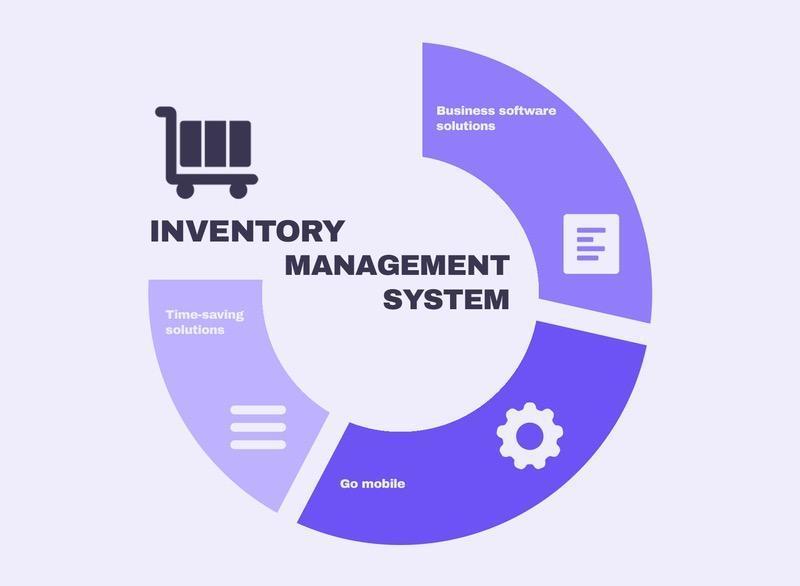
Sooner or later, any e-commerce company comes to understand the need to automate the management of goods, as well as stock balance. The problem is especially acute in the presence of a large product range. That’s why (and that’s when) you have to connect your inventory to the online marketplace. In other words, you must think about a reliable eCommerce inventory management service.
But what is it? What is an inventory management system?
In fact, it’s a service, which gives a company a tool for full control over its resources. So retail inventory management software for small businesses and large corporations allows simplifying and systematizing the work with the assortment, which increases the efficiency of the online platform in the tote.
Features the best inventory management software must have:
-
Purchasing and stock management system
-
Customer requests forecasting
-
Automation of the reorder system
-
Barcoding tool
Stitchlabs
Stitch Labs affords an opportunity to organize multi-channel online assortment management and provides a convenient tool to process orders. Undoubtedly, Stitchlabs is a great solution to implement effective goods control.
It offers different tariff plans, but even the most affordable packages of eCommerce inventory management services have worthy functionality:
-
multichannel management and control over the goods and range;
-
sync channels automatically;
-
the possibility to import orders;
-
sales status reports;
-
opportunities to create and include additional sales channels anytime you want;
-
information processing in a real-time mode
-
users support.
Update
In mid-2020 Stitch Labs was acquired by Square. This collaboration led to the creation of а lot of new promising digital products for eCommerce businesses.
Ecomdash
Ecomdash is a simple inventory management software, which takes advantage of cloud-based data storage. The system skillfully combines order processing tools, delivery services, and an asset management platform.
Ecomdash is a great solution for companies of any size. Its functionality includes:
-
Ongoing customer support via email, calls, and chat;
-
The ability to provide access to the service to a significant number of employees;
-
The possibility of additional eCommerce integrations;
-
Available API;
-
Advanced inventory management tools.
Invoice and accounting management system
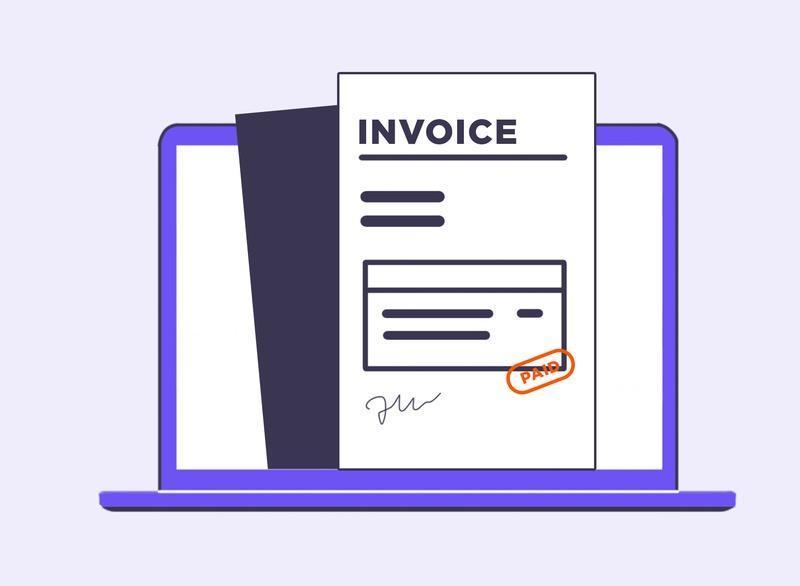
Everything related to invoicing and accounting seems to be a boring and difficult task. Moreover, such a task requires increased concentration, attentiveness, and even pedantry - qualities that not everyone can boast of. However, it's impossible to neglect the invoicing system, the company's earnings directly depend on accounting accuracy.
To simplify the work of the company, one can use third-party integrations for e-commerce. In addition, this solution will help the business to quickly obtain the necessary financial information, say, detailed data on the cost of products sold, as well as the payback period of the enterprise.
Features the invoice & accounting system must have:
-
Accounting tools;
-
Financial statistics;
-
Account management;
-
Inventory control;
-
Payment statement;
-
Analytics (regarding cash flow).
Quickbooks
QuickBooks belongs to good options to integrate third-party APIs when it comes to reliable and simple accounting and invoicing systems. This is a web service to automate the accounting of small and medium businesses. The program is very popular in the US, and in Europe, it's in great demand too.
QuickBooks helps save time by simplifying the accounting and integrated financial systems and allows you to fully work with a group of up to five users.
QuickBooks features:
-
Creating and managing invoices;
-
Tracking sales, expenses, payments;
-
Printing checks;
-
Online banking and data bank synchronization;
-
Rating system;
-
Dashboards and news feeds;
-
Creating custom accounts;
-
Automatic calculation of taxes;
-
Balance sheets.
Xero
Of course, Quickbooks is by no means the only solution. There are other efficient and popular integrations, the same Xero, which is owned by a New Zealand company and highly appreciated by customers around the world.
Xero is a tool with cloud storage that gives the user an idea of his cash flow in real time. In addition, the service helps to effectively control your finances. Since the Xero accounting system takes information from custom online banking, there is no risk of mistakes when entering numbers.
Xero can work in conjunction with hundreds of third-party integration options intended to improve business effectiveness and provides an excellent opportunity to reduce the number of paper documents used in the office.
Xero features:
-
Xero Review: Full Client Service;
-
Clear cash flow interface;
-
Convenient collection and payment management;
-
Tax processing;
-
Ability to convert data from QuickBooks.
CRM

Among other third-party integrations for e-commerce required to build and grow a customer-obsessed business, we cannot forget about the CRM service.
As you probably know, CRM means Customer Relationship Management. This system contains various activities, tools, data technologies aimed at achieving a cherished goal: to create, develop, and strengthen relationships with clients.
CRM should have such features as:
-
easy access to all data about each client;
-
effective management of information sources;
-
analytical tools to study user behavior;
-
attracting new leads;
-
sales automation.
Zoho
Among the popular integrations, we can't fail to mention Zoho CRM - a system, which has over 250 thousand users around the world. And their number is constantly growing!
Zoho provides reliable tools for marketing and sales management, as well as client support, by integrating these modules into a unified business system. The solution is considered safe because user data is being strongly protected.
Zoho offers:
-
tracking over sales to further simplify all the processes (by automating them);
-
opportunity to make more deals in less time;
-
effective planning of promotions;
-
a simplified client support process;
-
improved payback rates.
Salesforce
If you want to strengthen your retail management system with an effective CRM program, choose Salesforce. It would be a great option as Salesforce leads among the competition and offers advanced functionality, good usability, and innovative features.
Salesforce will allow you to:
-
automate the sales process;
-
manage transactions with ease;
-
monitor the sales system;
-
make sales forecasts;
-
conduct marketing research on customer preferences;
-
comprehensively analyze sales performance according to various criteria;
Rating and feedback

Well, what other e-commerce options do you need if you want to make your online portal work at full capacity?
Obviously, you should think of the rating and feedback system.
According to statistics, 95% of people read product reviews before buying goods online. Thus, the presence of reviews on the site keeps the client among loyal customers. The same applies to ratings since the person is more likely to make a purchase if he can see and compare product ratings.
Consequently, the comments and ratings will give additional user involvement and a significant increase in search traffic.
But, of course, the system must be organized wisely, it shouldn't require extra actions from users. So you have to integrate third-party software which will help achieve such a goal.
Features the rating and feedback system must have:
-
The possibility of moderation reviews and users;
-
Automatic cross-posting in the social network;
-
Saving feedback to the database;
-
Detailed statistics;
-
Convenient moderation panel.
Reziew
Reziew is a good example of eCommerce integrations for collecting and processing reviews and ratings. The program has an intuitive interface and offers many useful features, including:
-
reviews in the form of photos and videos;
-
review optimization;
-
the possibility of full customization of ratings and reviews;
-
mobile platform support;
-
convenient moderation tools.
Live Chat

We seem to have discussed almost all the popular eCommerce configurations, but the list isn't complete yet! Live chat is also an important tool to increase online business efficiency.
The fact is that users want to receive the necessary information quickly and conveniently. And online chat is a great way to provide such information firsthand. of the consumer performing further actions: ordering the service, purchasing a product, etc.
Features a live chat must have:
-
Easy viewing on any device;
-
Work in conjunction with CRM and other parts of your retail management system;
-
Callback order (if the operator is unavailable at the moment);
-
Convenient interface;
-
The ability to share a file.
Olark
Olark is an online chat that simplifies customer service. It is very easy to install and supports Jabber, GTalk, AIM, MSN, iChat.
Key features of Olark:
-
Customizable interface (including color scheme);
-
Possibility to obtain data about the interlocutor;
-
Offline messages;
-
Organization of group chats;
-
Saving chat history;
-
Chat Ratings;
-
Real-time reports;
-
Support Magento, BigCommerce, Shopify, etc.
-
Available API for integrating software and systems of live chat;
-
Multilingual support.
Userlike
A lot of types of applications that require integration of live chat features would consider Userlike a suitable choice. It can be organically integrated into the web pages; moreover, it offers ample opportunities to customize the widget. Paid options allow using a White Label service either.
Userlike features:
-
Automatic invitation to chat;
-
iOS and Android support;
-
Collection of user data;
-
Offline support form;
-
White label;
-
The ability to supplement a widget with the company logo;
-
Open API;
-
Multilingual service;
-
Detailed statistics.
E-mail marketing

Email marketing is also among the key eCommerce integrations. By sending emails, you can make more personalized offers, which means there are more chances to get a user to buy your product
And by the way, using specialized e-commerce options, you're able to segment the lists of subscribers in such a way that each of them receives letters only on those topics that interest him.
The e-mail marketing service must provide:
-
Personalization of mailings;
-
The ability to launch transactional mailings (or Trigger Emails);
-
Cross-channel approach to email communication;
-
Bulk Mailing List Automation;
-
Automatic generation of consumer recommendations regarding products;
-
Letter Templates.
MailChimp
Obviously, it's among the most popular integrations designed to optimize marketing over email communication. It belongs to the industry leaders and has won fame thanks to its well-thought-out functionality. Besides, MailChimp provides the ability to start trigger campaigns and create responsive emails.
It offers:
-
A powerful set of A / B testing tools;
-
Division of users into groups;
-
Analysis of sent messages;
-
Setting the send time;
-
Neat letter templates.
Marketo
Striving to build a custom integration focused on email marketing, you should take a look at Marketo - the online platform intended to simplify the process of sending email letters and increase business performance.
Marketo will be your assistance in finding and engaging the proper clients, as well as strengthening their loyalty to the enterprise.
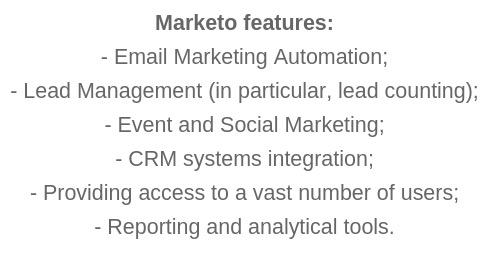
Analytics

Earlier in the article, we repeatedly mentioned that certain third-party integration options (say, a marketing system or even a live chat) have analytical features. However, this time, we're talking about a powerful analytic tool, which allows owners of online platforms to study user behavior and, based on the data received, make changes to their products to increase income.
Features the analytics system must have:
-
Tracking traffic channels;
-
Product audience survey;
-
Smart Link to track activity;
-
Data storage and access without restriction;
-
Building infographic statistics;
-
User behavior analysis;
-
Tracking traffic channel performance.
Google Analytics API
If you want to integrate third-party software to analyze your e-commerce platform, then the first thing which comes to mind is, of course, Google Analytics.
Google Analytics is probably the most popular web analytics system used today to track the behavior of site visitors. And although many people work with Google Analytics via the system’s web interface, few of them take advantage of the Google Analytics API.
The Google Analytics API is another (and more effective) way to interact with a web analytics system to get the data you need. This is ideal for those who want to automate reporting creation and integrate Google Analytics with their own business processes.
Google Analytics API will help you to:
-
track user behavior;
-
create and manage user profiles;
-
simplify the processing and analysis of statistics.
SharpSpring
SharpSpring is not as well-known as Google Analytics but it’s also included in the list of the popular integrations.
SharpSpring allows automating analytical processes, identifying a huge number of potential customers, and converting them into real buyers. So it's a great way to increase the income from marketing investments.
SharpSpring offers:
-
Affordable price;
-
Flexible program;
-
Ease of adaptation to specific business processes.
Notifications

Notifications are the last but not least item in the list of third-party integrations for e-commerce.
Web push notifications are alerts, which pop up in the user's browser window. They attract more customers, increase conversions, and better sales of online businesses.
Features the notification system must have:
-
Informing about special offers, discounts, sales, order status;
-
Notification of new products in stock or available for order from the customer's list;
-
Reminders of an abandoned basket, etc.;
-
Offline notifications (the user will receive them when connected to the network);
-
Personalized push notifications by different criteria (segmentation by location, browser language, and other parameters).
Urban Airship
UrbanAirship allows sending push notifications to users of the web and mobile platforms and can be integrated with various popular eCommerce configurations. UrbanAirship is useful for both developers and clients who want to implement the notification system without creating their own server.
Its features include:
-
Deep links;
-
Personalization and grouping of users;
-
The possibility of testing to increase the effectiveness of notifications;
-
Real-time mode;
-
Analytical Toolkit.
Firebase
Firebase helps you send notifications and synchronize customer data in real time. Also, it allows the integration of software and systems to notify millions of users without affecting the speed of the resource.
Its key features:
-
Firebase Real-time Database;
-
Ability to save, retrieve, and synchronize data with the cloud NoSQL database;
-
Available Firebase SDK for Android, Javascript, or iOS;
-
Continuous data update (on all devices).
Conclusion
There are different options to integrate third-party APIs: you can do the work yourself or entrust it to professionals. We strongly recommend the second way. This would lead to better results, although it’ll require more costs. However, we're talking about e-commerce, which means the profit will certainly follow, and the project will be paid off.
So, when integrating your business process applications into your website, try to choose a skilled specialist to help you accomplish the task up to the mark.
Our Agilie team has the experience you need. We can build a custom integration that will make your online store more efficient and successful. Among our projects, there is a wholesale B2B marketplace, which fully meets the requirements of the modern e-commerce market.
